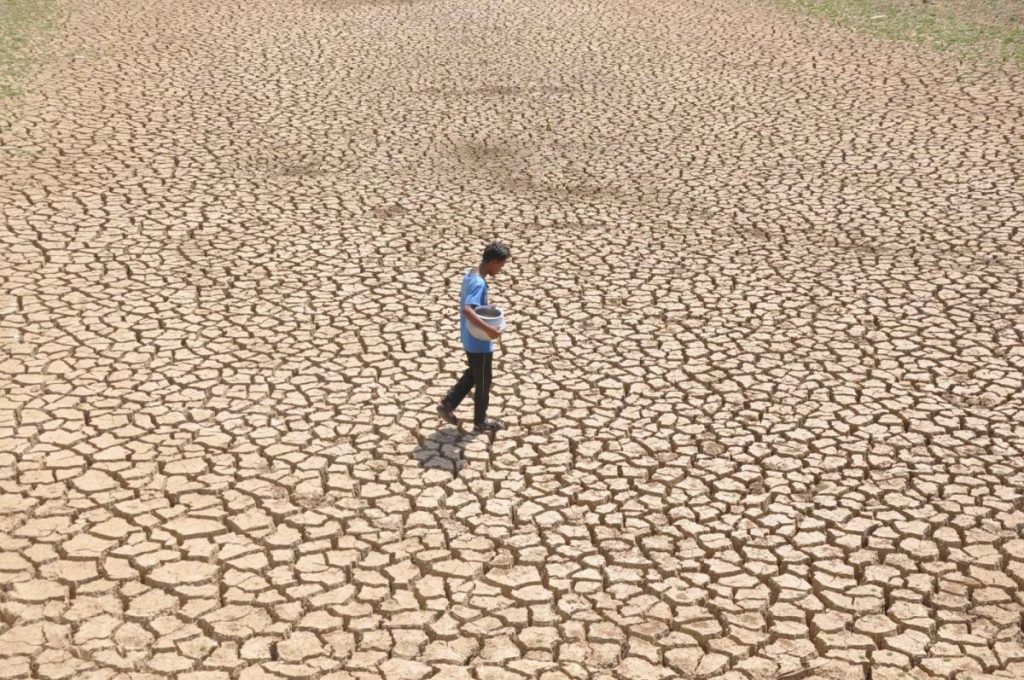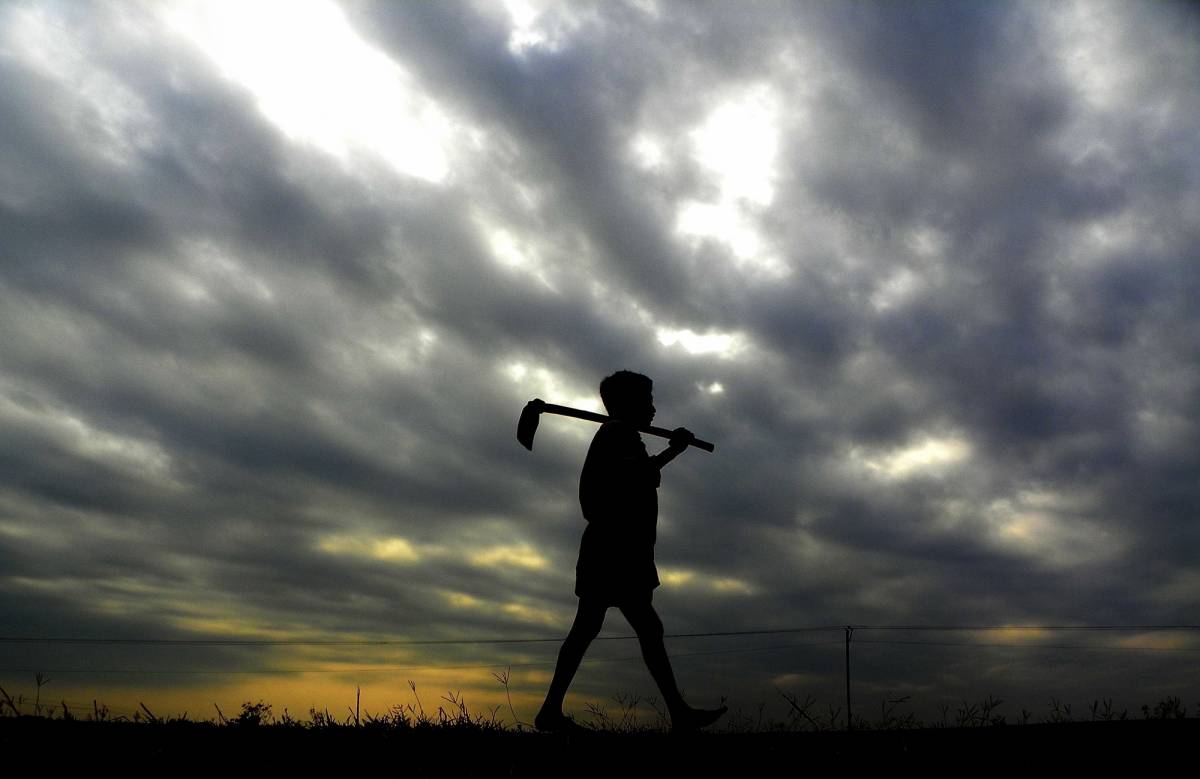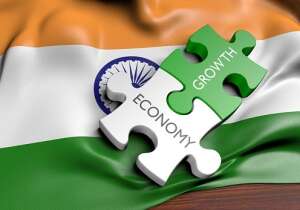A common scientific theory opines that changing rainfall patterns as a result of climate breakdown is a key driver of drought, but the report also identifies the inefficient use of water resources and the degradation of land under intensive agriculture and poor farming practices as playing a major role, writes Asad Mirza
Drought is a hidden global crisis that risks becoming “the next pandemic” if countries do not take urgent action on their water and land management.
A recent UN report, says that at least 1.5 billion people have been directly affected by drought during the current century, and its economic cost has been estimated at $124bn (�89bn). The true cost is likely to be many times higher as estimates do not include much of the impact in developing countries.
The report entitled Global Assessment Report on Disaster Risk reduction: Special Report on Drought 2021 published earlier this month will be part of discussions at the next climate talks known as COP26, which are scheduled to take place in Glasgow, UK in November.
Mami Mizutori, the UN secretary general’s special representative for disaster risk reduction in the foreword of the report says that drought is on the verge of becoming the next pandemic and there is no vaccine to cure it. Most of the world will be living with water stress in the next few years. Demand will outstrip supply during certain periods. Drought is a major factor in land degradation and the decline of yields for major crops.
She says many people had an image of drought as affecting desert regions in Africa, but that this was not the case. Drought is now widespread, and by the end of the century all but a handful of countries will experience it in some form.

She further says that people have been living with drought for 5,000 years, but what we are seeing now is very different. Human activities are exacerbating drought and increasing the impact, threatening to derail progress on lifting people from poverty.
Developed countries too have not been immune to drought. The US, Australia and southern Europe have experienced drought in recent years. Drought costs more than $6bn a year in direct impacts in the US, and about �9bn (�7.7bn) in the EU.
A senior scientist at the US National Oceanic and Atmospheric Administration (NOAA) and a co-author of the report, Roger Pulwarty has been quoted as saying that drought also goes beyond agriculture. He gives the example of River Danube in Europe, where recurring drought has affected transport, tourism, industry and energy generation. He further opines that we need to have a look at how to manage resources such as rivers and large water basins.
ALSO READ: Travel during Covid: precautions to take
A common scientific theory opines that changing rainfall patterns as a result of climate breakdown is a key driver of drought, but the report also identifies the inefficient use of water resources and the degradation of land under intensive agriculture and poor farming practices as playing a major role. Deforestation, overuse of fertilisers and pesticides, overgrazing and over-extraction of water for farming are also major problems, identified in the report.
Mizutori has called for governments to take action to help prevent drought by reforming and regulating how water is extracted, stored and used, and how land is managed. She says early warning systems could do much to help people in danger. She stressed on working with local people and techniques, as local and indigenous knowledge could help to inform where and how to store water and how to predict the impact of dry periods.

Energy Imbalance
Meanwhile, in another related alarm scientists from NASA and NOAA say that earth’s �energy imbalance’ roughly doubled from 2005 to 2019 in an �alarming’ manner. According to a new research, details of which were released earlier this month, the earth is trapping nearly twice as much heat as it did in 2005, described as an �unprecedented’ increase amid the climate crisis.
‘Energy imbalance’ refers to the difference between how much of the Sun’s ‘radiative energy’ is absorbed by Earth’s atmosphere and surface, compared to how much ‘thermal infrared radiation’ bounces back into space. In a statement about this study NASA said that, “A positive energy imbalance means the Earth system is gaining energy, causing the planet to heat up, and the trends we found were quite alarming in a sense”.
Any increase in greenhouse gas emissions keeps heat in earth’s atmosphere, trapping radiation that would otherwise move into space. This warming spurs other changes, including ice and snow melt. Any increase in water vapour, and changes to clouds, could further exacerbate this warming, NASA says.
The study found that this doubling is the result, in part, by an increase in greenhouse gases and water vapour, as well as decreases in clouds and ice. Researchers also said that a �naturally occurring’ shift in the Pacific Ocean from a cool phase to a warm one probably had a significant role in amplifying this energy imbalance.
The study also determined that unless the rate of heat uptake slows, greater shifts in climate patterns should be expected.

Some cheer for activists
On the other hand, in an historical judgement, a Belgian court has ruled that Belgium’s climate failures violate human rights. In the latest legal victory against public authorities that have broken promises to tackle the climate emergency,
Belgian Judges said state’s failure to meet climate targets breaches civil law and human rights convention.
The Brussels court of first instance declared the Belgian state had committed an offence under Belgian’s civil law and breached the European convention on human rights.
By not taking all “necessary measures” to prevent the “detrimental” effects of climate change, the court said, Belgian authorities had breached the right to life (Article 2) and the right to respect for private and family life (Article 8).

The NGO, Klimaatzaak – which means climate case in Dutch, and which brought the case hailed the judgment as historic, both in the nature of the decision and the court’s recognition of 58,000 citizens as co-plaintiffs.
The legal victory in Belgium follows similar rulings in the Netherlands, Germany and France, where judges have condemned governments for inadequate responses to the climate crisis or failing to keep their promises.
According to the European Commission, Belgium the first continental European country to undergo the industrial revolution is on track to miss its emission reduction targets for 2030.
What all these three news put together means is that the Climate Change threat is really more dangerous and omnipresent. Until and unless the world’s leaders act in unison and honour their commitment to raise and spend $100 billion, to tackle the threat as per the Paris Agreement and take some coordinated and concerted measures at Glasgow, we may face a dire threat to the human race.
(Asad Mirza is a political commentator based in New Delhi. He writes on Muslims, educational, international affairs, interfaith and current affairs. The views expressed are personal)













